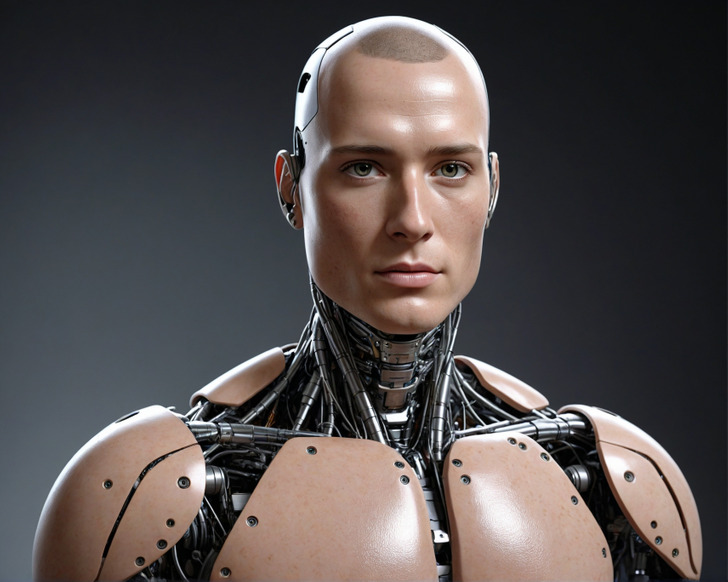"Looks Like a Dude," Jennifer Lopez’s Child Displays a Striking Body Modification, Causing a Stir Online


In a chilling display of scientific prowess, Japanese researchers have achieved a groundbreaking feat: crafting a humanoid robot face adorned with living human skin. This innovation, led by Professor Shoji Takeuchi and his team at the University of Tokyo, marks a significant leap in robotics and biomedical engineering.
At the heart of this technological marvel lies a 3D facial mold intricately covered with engineered living skin tissue. Inspired by human skin ligaments, the scientists introduced specialized perforations into the robot's face, enabling seamless integration of the skin layer. This breakthrough promises to enhance the mobility of robots, potentially revolutionizing fields like cosmetics and surgical training.
The process involves growing human skin cells in a lab environment, primarily sourced from surplus skin removed during surgeries. By strategically designing V-shaped perforations and applying collagen gel, the researchers ensured a durable bond between the robot's surface and the engineered skin. This method allows the skin to move in sync with the mechanical components, mimicking human facial expressions without the risk of detachment.

Professor Takeuchi's Biohybrid Systems Laboratory has consistently pushed the boundaries of bio-integration. Prior endeavors include the creation of miniature robots powered by biological muscle tissue, 3D-printed lab-grown meat, and even self-healing human skin. This latest feat, however, marks a significant leap, raising concerns about the line between human and machine.
Despite concerns about AI's impact on employment, experts like Elizebeth Varghese emphasize that technological advancements create new opportunities rather than eliminate them. This innovation underscores the potential for collaborative synergy between humans and machines, shaping a future where both thrive.

Looking ahead, the integration of living skin onto robotic structures opens avenues for further research into aging, cosmetics, and surgical innovations. With ongoing developments in self-healing materials and sensory technologies, robots may soon possess capabilities once reserved for science fiction.
Elon Musk, celebrated for his visionary leadership at Tesla and SpaceX, has sparked widespread debate with his latest innovation: the Clothing-Folding Robot. This unveiling has generated varied responses, reflecting both intrigue and skepticism. Full article is here.











